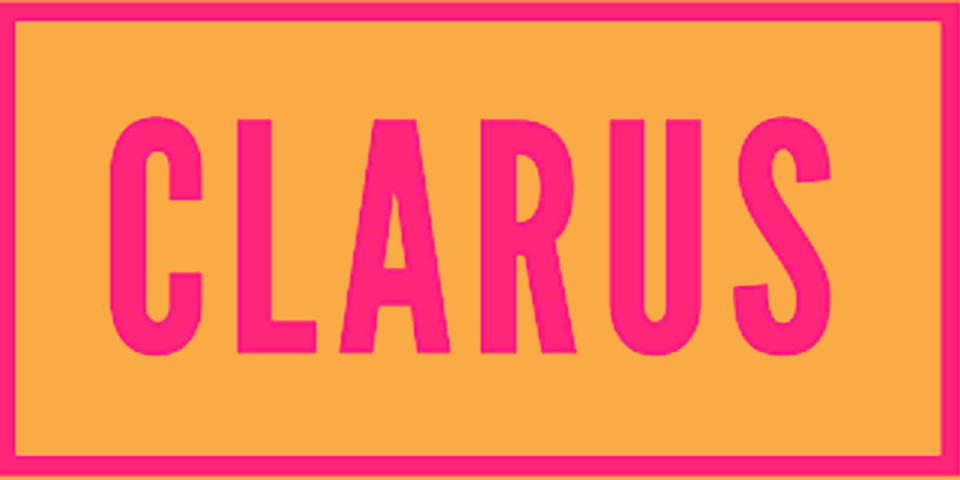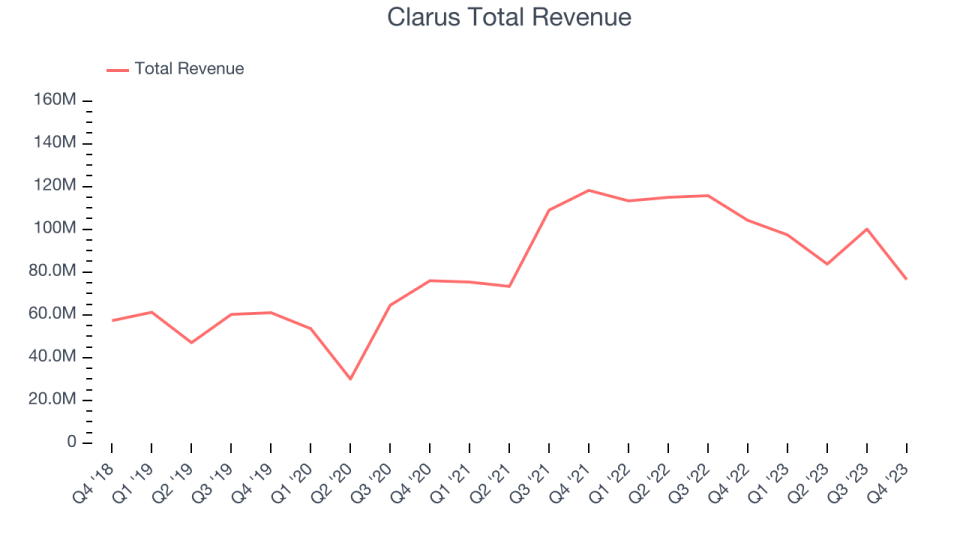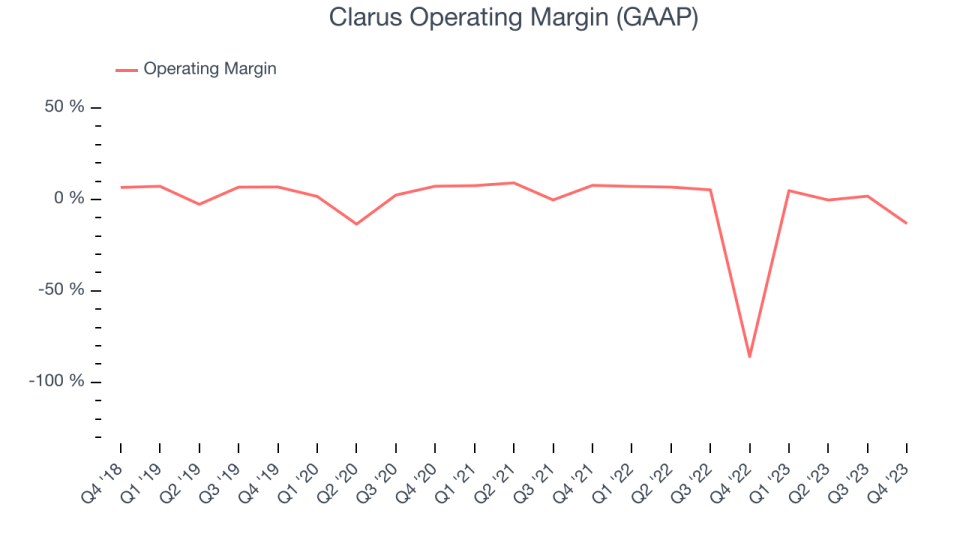Clarus (NASDAQ:CLAR) Misses Q4 Sales Targets

Outdoor lifestyle and equipment company Clarus (NASDAQ:CLAR). fell short of analysts' expectations in Q4 FY2023, with revenue down 26.6% year on year to $76.5 million. The company's full-year revenue guidance of $275 million at the midpoint also came in 20.5% below analysts' estimates. It made a non-GAAP loss of $0.07 per share, down from its profit of $0.20 per share in the same quarter last year.
Is now the time to buy Clarus? Find out by accessing our full research report, it's free.
Clarus (CLAR) Q4 FY2023 Highlights:
Revenue: $76.5 million vs analyst estimates of $83.83 million (8.7% miss)
EPS (non-GAAP): -$0.07 vs analyst estimates of $0.10 (-$0.17 miss)
Management's revenue guidance for the upcoming financial year 2024 is $275 million at the midpoint, missing analyst estimates by 20.5% and implying -23.1% growth (vs -20.3% in FY2023)
Gross Margin (GAAP): 28.9%, down from 34.6% in the same quarter last year
Market Capitalization: $213.3 million
“Despite very challenging macroeconomic headwinds throughout 2023 that adversely impacted consumer demand, we have taken important steps to realign our brands and inventory levels to position Clarus for long-term profitable growth as a pure-play, ESG-friendly outdoor business,” said Warren Kanders, Clarus’ Executive Chairman.
Initially a financial services business, Clarus (NASDAQ:CLAR) designs, manufactures, and distributes outdoor equipment and lifestyle products.
Leisure Products
Leisure products cover a wide range of goods in the consumer discretionary sector. Maintaining a strong brand is key to success, and those who differentiate themselves will enjoy customer loyalty and pricing power while those who don’t may find themselves in precarious positions due to the non-essential nature of their offerings.
Sales Growth
A company's long-term performance can indicate its business quality. Any business can enjoy short-lived success, but best-in-class ones sustain growth over many years. Clarus's annualized revenue growth rate of 11% over the last five years was mediocre for a consumer discretionary business.

Within consumer discretionary, a long-term historical view may miss a company riding a successful new product or emerging trend. That's why we also follow short-term performance. Clarus's recent history shows a reversal from its already weak five-year trend as its revenue has shown annualized declines of 2.4% over the last two years.
This quarter, Clarus missed Wall Street's estimates and reported a rather uninspiring 26.6% year-on-year revenue decline, generating $76.5 million of revenue. Looking ahead, Wall Street expects revenue to decline 5.9% over the next 12 months.
When a company has more cash than it knows what to do with, buying back its own shares can make a lot of sense–as long as the price is right. Luckily, we’ve found one, a low-priced stock that is gushing free cash flow AND buying back shares. Click here to claim your Special Free Report on a fallen angel growth story that is already recovering from a setback.
Operating Margin
Operating margin is a key measure of profitability. Think of it as net income–the bottom line–excluding the impact of taxes and interest on debt, which are less connected to business fundamentals.
Given the consumer discretionary industry's volatile demand characteristics, unprofitable companies should be scrutinized. Over the last two years, Clarus's high expenses have contributed to an average operating margin of negative 8.8%.

This quarter, Clarus generated an operating profit margin of negative 13.2%, up 72.7 percentage points year on year.
Over the next 12 months, Wall Street expects Clarus to become profitable. Analysts are expecting the company’s LTM operating margin of negative 1.1% to rise to positive 4%.
Key Takeaways from Clarus's Q4 Results
We struggled to find many strong positives in these results. Its full-year revenue guidance missed and its revenue fell short of Wall Street's estimates. Overall, the results could have been better. The stock is flat after reporting and currently trades at $5.27 per share.
So should you invest in Clarus right now? When making that decision, it's important to consider its valuation, business qualities, as well as what has happened in the latest quarter. We cover that in our actionable full research report which you can read here, it's free.
